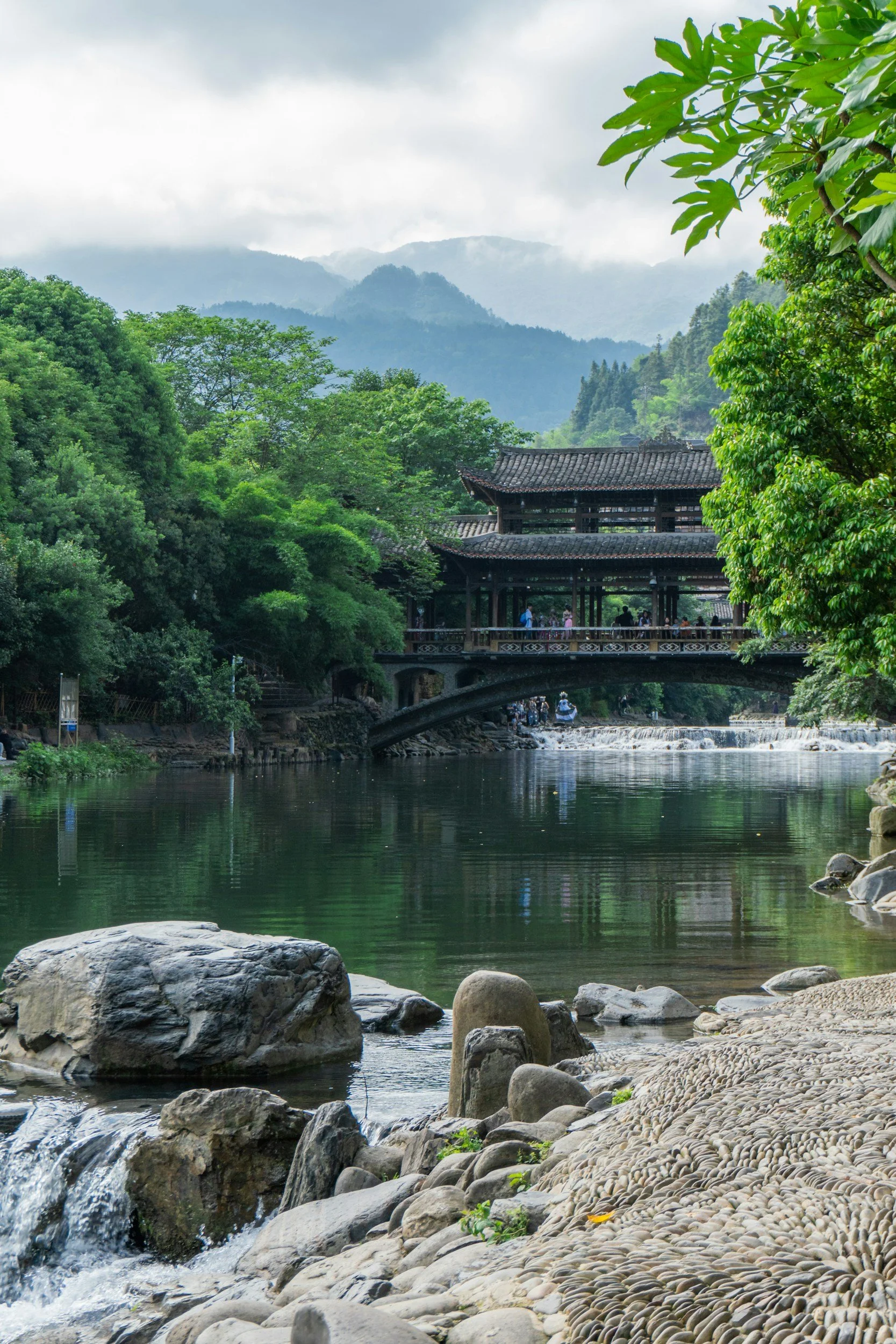A Month-by-Month China Travel Guide: Where to Travel in China in July
A year-round guide to discovering China’s most beautiful, culturally rich, and seasonally perfect destinations.
China in July is big, bold, and often humid — but it’s also bursting with life. The key to traveling well this month is elevation and latitude: cool off in alpine meadows, escape to the country’s northern edge, or hide out in breezy coastal towns and forested valleys. While the lowlands swelter, China’s great outdoors offers high-altitude wonder and offbeat adventure.
July
Summer Highlands, Cool Cities & Starry Skies
Mohe, Heilongjiang
China’s Arctic village where the sun barely sets
Tucked into China’s far north, bordering Russia, Mohe is the country’s only subarctic zone. In July, it experiences long daylight hours — nearly 18 hours of light — and temperatures that hover around a perfect 20°C. It’s peaceful, lush, and full of rustic charm.
Top things to do:
Visit Beiji Village (“Arctic Village”) and stand at the country’s northernmost point.
Catch a glimpse of the midnight sun, or if you're lucky, faint auroras on the clearest nights.
Float down the Heilongjiang River on a wooden raft.
Visit border landmarks and Russian-style buildings in town.
What to eat: Reindeer meat skewers, forest mushroom soups, Russian black bread, and blueberry wine.
Travel tips:
Best accessed via Harbin, then train or flight to Mohe.
Bring bug spray — the wetlands are lush but alive.
A fantastic stop for those chasing off-the-beaten-path serenity and stargazing.
Changbai Mountain, Jilin
Crater lakes, cool forests, and volcanic legends
Straddling the border with North Korea, Changbai Mountain is a lush, high-altitude escape in the northeast. July offers cool hiking weather, wildflower-strewn meadows, and access to Heaven Lake, one of China’s most dramatic natural wonders.
Top things to do:
Ride to Heaven Lake and marvel at its blue depths framed by jagged peaks.
Hike through birch forests and alpine streams in the Western Slope scenic area.
Relax in natural hot springs or waterfalls hidden in the forest.
Learn about the region’s Korean minority culture in nearby towns like Erdaobaihe.
What to eat: Korean-style cold noodles, pan-fried pork with wild herbs, mushroom dumplings, and ginseng chicken soup.
Travel tips:
Weather changes quickly — dress in layers and prepare for occasional fog.
July is peak bloom for wildflowers and best visibility for the lake.
Combine with nearby Yanbian Korean Autonomous Prefecture for cultural context.
Liupanshui, Guizhou
The coolest city in southern China (literally)
Nicknamed “The Cool City”, Liupanshui offers summer travelers a rare gem in the south: daytime highs in the mid-20s°C and natural air conditioning from its altitude. The landscape is rugged and karstic, with rivers, caves, and minority villages nestled in misty hills.
Top things to do:
Visit Qilin Cave, an enormous underground wonder of limestone sculptures.
Explore Yushe National Forest Park, home to waterfalls, alpine flowers, and hiking trails.
Attend summer folk festivals in nearby Yi or Miao minority villages.
Cool off in karst lakes and clear streams without a tourist in sight.
What to eat: Grilled corn cakes, sour-spicy noodles, Miao-style cured meat, and ice-cold herbal jelly drinks.
Travel tips:
Less visited than Guizhou’s east — ideal for authentic, crowd-free exploration.
Evenings can be surprisingly chilly — bring a sweater for nights.
Add on nearby Anshun or Fanjingshan for a fuller Guizhou loop.
Weihai, Shandong
Seaside breezes and Korean-influenced calm
Located on the tip of the Shandong Peninsula, Weihai is a low-key coastal city with clean beaches, seafood markets, and a distinctive Korean cultural presence thanks to its proximity to Korea. In July, the waters are warm and the breezes constant.
Top things to do:
Stroll the Liugong Island, once a British-leased naval base, now a green escape with sea views.
Explore the Korean district for BBQ restaurants, street snacks, and K-pop shops.
Take a beach day on International Bathing Beach or quiet local coves.
Visit Huaxia City, a folk-themed park with old village replicas and fun for families.
What to eat: Braised sea cucumber, fried oysters, spicy Korean-style cold noodles, and street grilled squid.
Travel tips:
It’s still off the mainstream radar — but accommodations get busy mid-July with domestic families.
Pair with Qingdao or Yantai for a longer beach circuit.
Go for seafood early in the morning as boats come in — it doesn’t get fresher.
Xinjiang (Sayram Lake, Nalati Grasslands, and Beyond)
Epic landscapes and cultural crosswinds
Xinjiang’s northwest corridor — stretching from Ili Valley to Sayram Lake and the Nalati Grasslands — is jaw-dropping in July. Rolling pastures glow gold and green, snowcaps melt into rivers, and yurts dot the valleys. It’s one of China’s greatest scenic road trips.
Top things to do:
Camp or stay in a yurt beside Sayram Lake, with sunsets you’ll never forget.
Ride horses across the flower-covered Nalati Grasslands.
Drive through Zhaosu County, with its lavender fields and Kazakh herders.
Explore small towns with rich Uyghur, Kazakh, and Han cultures blending together.
What to eat: Grilled lamb kebabs, hand-pulled noodles (laghman), yogurt with honey, pilaf (polo), and fresh apricots.
Travel tips:
Travel distances are vast — hire a driver or join small-group tours for ease.
July is peak season — book accommodation early, especially around Sayram.
Sunshine is intense; pack hats, SPF, and water.
Don’t let the summer heat scare you off — July is when China’s highest peaks, northern forests, and wild grasslands come alive. Whether you’re chasing the midnight sun, sleeping in a yurt, or hiking toward an alpine lake, the rewards are immense. You’ll find space to breathe, skies that never end, and landscapes that make you feel small in the best possible way.
Planning to chase the cool in July? Start sketching your ideal route and gear up for remote stays and fresh-air days. Coming up next: August, when alpine adventures, mirrored lakes, and summer’s last hurrah take center stage.





